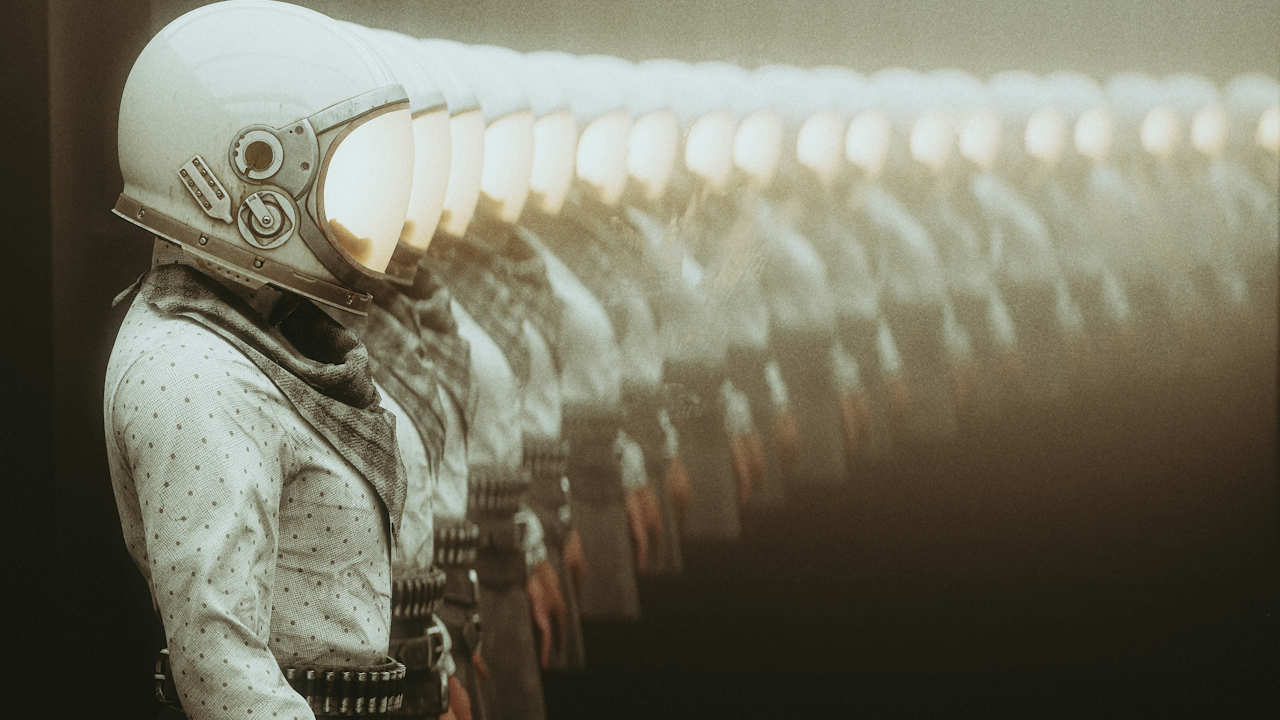Retro futurism is a fascinating blend of nostalgia and imagination. It looks back at past visions of the future and reinterprets them for modern style. This aesthetic draws inspiration from mid-twentieth century science fiction, space exploration, and utopian or dystopian ideas about what humanity might become. In fashion, retro futurism has taken shape through shimmering fabrics, exaggerated silhouettes, and playful designs that reference both optimism about technological progress and skepticism about its consequences. As designers and wearers revisit these ideas, retro futurism continues to influence how we think about clothing as more than function, but as a reflection of cultural hopes and anxieties.
The roots of retro futurism in fashion can be traced to the postwar era. In the 1950s and 1960s, space exploration captured global attention, and popular culture became fascinated with rockets, robots, and cosmic landscapes. Designers like Pierre Cardin and André Courrèges translated these ideas into clothing. They used metallic fabrics, streamlined shapes, and geometric patterns that reflected the sleek aesthetics of spacecraft. These designs were less about everyday wearability and more about embodying the sense of possibility that the Space Age represented. Clothing became a costume for the future, allowing people to imagine themselves as explorers of distant worlds.
Today, contemporary fashion revisits these historic references with both reverence and irony. Designers reimagine the bold shapes and shiny textures of the 1960s but reinterpret them through sustainable materials or digital-inspired patterns. A silver mini dress reminiscent of Courrèges might now be made from recycled fabrics, combining past optimism with modern ecological awareness. Similarly, space helmets, bubble visors, and sculptural accessories appear on runways, not as practical gear but as playful nods to past sci-fi visions. This blending of retro aesthetics with modern values is part of what makes retro futurism feel fresh rather than purely nostalgic.
A central theme in retro futuristic fashion is the material. Metallics dominate, whether in silver, gold, or iridescent finishes that recall chrome spaceships and starlit skies. Plastics and vinyl are also iconic, referencing both the novelty of synthetic materials in the mid-twentieth century and their connection to ideas of progress. In current interpretations, these shiny textures are often contrasted with matte fabrics or layered in creative ways to avoid becoming costumes. By doing so, designers achieve a balance between homage and innovation.
Silhouette also plays a key role. Many retro futuristic garments exaggerate shape to suggest something not entirely human. Think of padded shoulders, circular cutouts, or angular lines that look more robotic than organic. Some designs elongate the body with towering boots or sculpted jackets, while others embrace curves through bubble skirts and rounded helmets. These choices challenge traditional human-centered tailoring, pushing the wearer into a space where clothing is as much a fantasy as it is a garment.
Color palettes in retro futurism often oscillate between two extremes. On one hand, there are bright, utopian tones like gleaming whites, silvers, and primary colors. These evoke optimism, technological advancement, and clean visions of the future. On the other hand, darker palettes of black, deep purples, and metallic greens appear in dystopian interpretations. This reflects the duality of science fiction itself, where the future could be either a dazzling paradise or a cautionary nightmare. Fashion captures this tension, offering both dreamlike and unsettling visions in fabric form.
Streetwear has also absorbed retro futuristic influences. Sneakers with holographic surfaces, oversized sunglasses reminiscent of astronaut visors, and jackets with reflective panels echo science fiction while remaining practical for daily wear. Accessories in particular are an accessible way for consumers to engage with the style. Futuristic jewelry made of acrylics, chunky metallic belts, or visor-style shades allow individuals to experiment with the look without fully embracing avant-garde silhouettes. This mainstream adaptation demonstrates the versatility of retro futurism.
Media has played a significant role in reviving interest in retro futuristic fashion. Films, television, and even video games revisit mid-century visions of the future, often with highly stylized costumes. Series like The Jetsons or movies like Barbarella continue to inspire designers who appreciate their playful approach to fashion and futurism. Modern adaptations of sci-fi properties often reference these earlier aesthetics, blending them with contemporary sensibilities. Social media has amplified this trend, with creators showcasing DIY interpretations of retro futuristic outfits, often mixing thrifted metallic pieces with imaginative accessories.
One of the most intriguing aspects of retro futurism is how it reflects cultural attitudes. When the style first emerged, it expressed faith in science and exploration. Clothing mirrored the rocket ships and technological marvels people believed would shape their lives. Today, its revival often comes with more irony and complexity. Designers and wearers alike recognize that the future envisioned in the 1960s never arrived in the same form. Instead, we live in a digital age with different technologies and challenges. Retro futuristic fashion, therefore, becomes both a celebration of imagination and a critique of failed promises. It asks us to consider what we once thought the future would look like and why those dreams changed.
The ongoing relevance of retro futurism suggests that fashion is not only about aesthetics but also about storytelling. Clothes can serve as artifacts of cultural memory, linking past hopes to present realities. By wearing a metallic jacket or a pair of reflective boots, individuals participate in this story. They play with identity, time, and possibility. Designers continue to reinterpret the look because it allows for endless experimentation. The future is always changing, and so too are the ways we imagine dressing for it.
In conclusion, retro futurism remains a vibrant and influential trend in fashion. By combining science fiction imagery, bold materials, and imaginative silhouettes, it captures both nostalgia and forward thinking. From high fashion runways to everyday streetwear, elements of the style persist, proving its adaptability and cultural resonance. Retro futurism does not just remind us of how people once imagined the future. It invites us to think about how fashion itself can be a space for dreaming, experimenting, and shaping what comes next.

